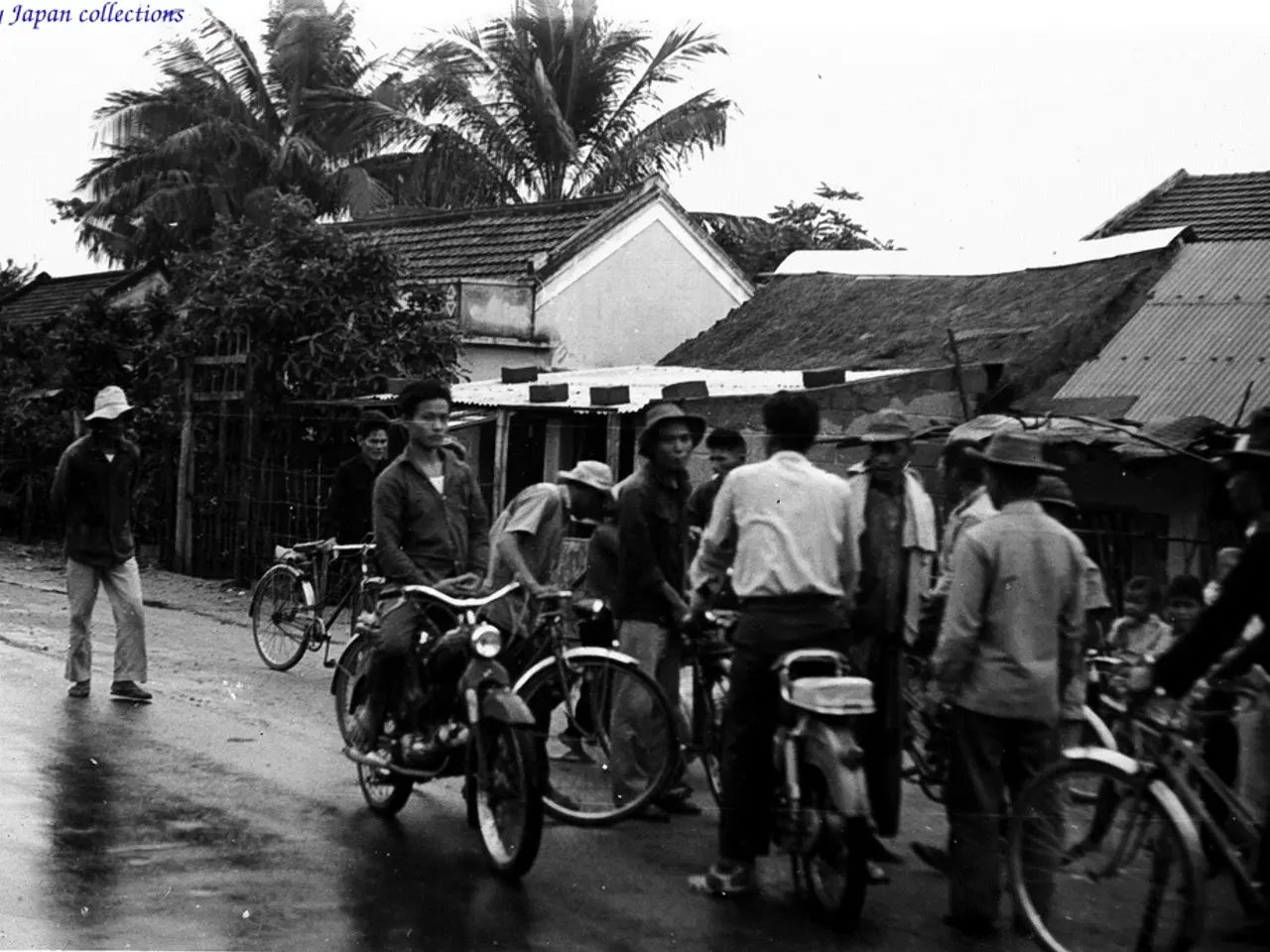Cancer progression in Chronic Myelogenous Leukemia (CML): Identifying signs of worsening condition
Chronic Myelogenous Leukemia (CML) is a type of blood cancer that, unlike other cancers, does not form solid tumors in the body [1]. Instead, it starts in tissue within the bone marrow that forms blood, allowing it to travel and spread wherever blood travels.
In the chronic phase, symptoms are usually mild or non-existent, and doctors often diagnose CML in this phase. However, as the disease progresses, certain advanced symptoms become apparent. These symptoms typically appear in the accelerated and blast phases and include fever, night sweats, severe fatigue, bone pain, abdominal discomfort or fullness due to spleen enlargement, unexplained weight loss, and easy bruising or bleeding [1][5].
In the accelerated phase, there may be new chromosome changes in the leukemia cells with the Philadelphia chromosome, and there is a very low platelet count, which the treatment did not cause [1]. This phase is characterized by symptoms such as weight loss, fever, worsening of anemia, and appetite loss [2].
The blast phase, also known as the acute or blast crisis phase, is the most severe. In this phase, a person's blood or bone marrow samples have 20% or more blasts [1][2][5]. This phase is marked by a rapid proliferation of blasts (>20% immature cells), and patients often suffer from fever, bone pain, severe fatigue, worsening bruising or bleeding, and possibly abdominal swelling due to organ enlargement. This phase requires intensified treatment like chemotherapy or stem cell transplant [1][2][5].
Large clusters of blasts are visible in the bone marrow, and the blast cells have spread to organs and tissues beyond the bone marrow in the blast phase [1]. Enlarged lymph nodes, liver, or spleen can also be present in advanced stages [5].
Studies show that around 50% of people with CML who received treatment with imatinib were still alive within 5 years of starting treatment, and many had typical blood cells [3]. However, there is insufficient reliable information on the survival rates of CML due to the relatively recent introduction of highly effective drugs to treat the condition.
In summary, the key advanced symptoms signaling CML progression are systemic constitutional symptoms (fever, weight loss, night sweats), hematologic manifestations (fatigue, bleeding, bruising), and organ-related symptoms (bone pain, spleen/liver enlargement) that become more pronounced and severe as the disease moves to accelerated and blast crisis phases [1][5]. It is crucial for individuals experiencing these symptoms to seek medical attention promptly.
References: 1. Leukemia & Lymphoma Society 2. Mayo Clinic 3. Cancer Research UK 4. American Cancer Society 5. National Cancer Institute
- Chronic Myelogenous Leukemia (CML) is a type of blood cancer that, unlike other cancers, does not form solid tumors but starts in tissue within the bone marrow that forms blood.
- In the chronic phase of CML, symptoms are usually mild or non-existent, but as the disease progresses, symptoms such as fever, night sweats, severe fatigue, bone pain, abdominal discomfort or fullness due to spleen enlargement, unexplained weight loss, and easy bruising or bleeding become apparent.
- The accelerated phase of CML is characterized by new chromosome changes in the leukemia cells with the Philadelphia chromosome, a very low platelet count, symptoms such as weight loss, fever, worsening of anemia, and appetite loss, and large clusters of blasts that are visible in the bone marrow and have spread to organs and tissues beyond the bone marrow.
- In the blast phase, which is the most severe, patients often suffer from fever, bone pain, severe fatigue, worsening bruising or bleeding, abdominal swelling due to organ enlargement, and enlarged lymph nodes, liver, or spleen.
- It is essential for individuals experiencing systemic constitutional symptoms (fever, weight loss, night sweats), hematologic manifestations (fatigue, bleeding, bruising), and organ-related symptoms (bone pain, spleen/liver enlargement) to seek medical attention promptly, as these symptoms indicate the progression of CML towards the accelerated and blast crisis phases.




